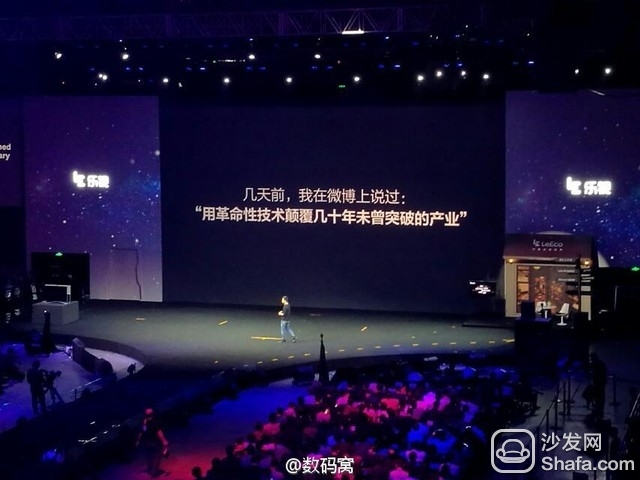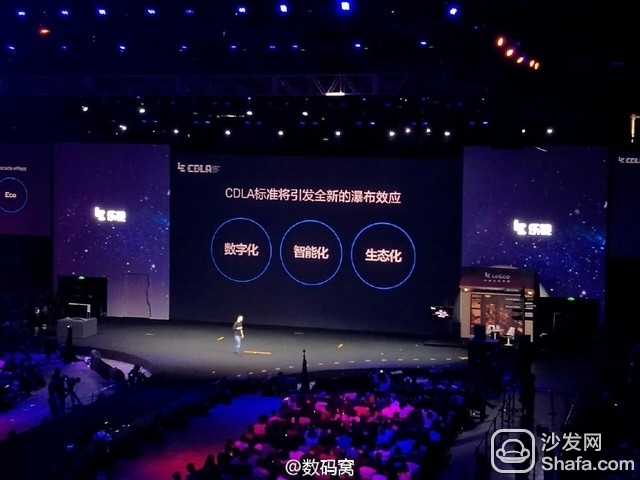On April 20th, at the “Le Music 2 & Le Max2 Conferenceâ€, LeTV presented the “Continual Digital Lossless Audio†(CDLA) standard. Its official reference is “the world’s first full digital lossless music standardâ€. The key point is to cancel the 3.5mm headphone jack and use the USB TYPE-C digital headphone instead of the traditional headphone.
LeTV put forward the CDLA standard (Source: Digital Wo Sina Weibo)
LeTV conference site (Source: Digital Pocket Sina Weibo)
LeTV conference site (Source: Digital Pocket Sina Weibo)
LeTV conference site (Source: Headphone Lin SIR Sina Weibo)
Letv believes that "the music experience is confined to the simulation era". Actually, this formulation is not very accurate. According to the meaning of the PPT expression at the conference, it should be "the earphone interface was confined to the simulation era." Indeed, digital headphones are still far from becoming a reality. There are only a few digital headphones available on the market. At the conference, LeTV announced that it will cooperate with FIIL headsets in depth. FIIL will support the CDLA standard across the board, which means that digital interface headsets will usher in a new force.
LeTV Announces Deep Cooperation with FIIL Headphones (Source: Digital Pocket Sina Weibo)
Although LeTV believes that replacing the 3.5mm headphone jack with the USB TYPE-C is a "revolutionary technology", it is essentially the same as the lightning interface on the dust mask removed from the 3.5mm headphone jack. Can it subvert decades? Unfinished industries "wait for further observation. After all, for the traditional HiFi industry, the appearance of digital headsets will hardly impact them. For portable HiFis, this is equivalent to placing the decoding and amplification system, which was originally external to the headset, in the headphones. It is not easy to say whether such an approach is effective in improving the sound quality. More significance may be that it contributes to the lightweighting of smart devices such as mobile phones. After the cancellation of the 3.5mm headphone jack, there are still many problems such as charging, data transmission and music listening conflicts. It may take time to propose a complete package solution.

LeTV conference site (Source: Digital Pocket Sina Weibo)
LeTV conference site (Source: Digital Pocket Sina Weibo)
However, breakthroughs are always a good thing. The further segmentation of the market and the precise positioning of HiFi and non-HiFi user groups are actually conducive to the sound development of the industry. Substitution is better, no substitution is better, in fact, no one is superior and inferior, but the user positioning is different. Just as now, although webcasting has become a big trend, people still listen to vinyl. The same is true for the change of interfaces.
Speakers are one of the most common output devices used with computer systems. Some speakers are designed to work
specifically with computers, while others can be hooked up to any type
of sound system. Regardless of their design, the purpose of speakers is
to produce audio output that can be heard by the listener.
Speakers are transducers that convert electromagnetic waves into sound waves. The speakers receive audio input from a device such as a computer or an audio receiver. This input may be either in analog or digital form. Analog speakers simply amplify the analog electromagnetic waves
into sound waves. Since sound waves are produced in analog form,
digital speakers must first convert the digital input to an analog
signal, then generate the sound waves.
The sound produced by speakers is defined by frequency and amplitude.
The frequency determines how high or low the pitch of the sound is. For
example, a soprano singer's voice produces high frequency sound waves,
while a bass guitar or kick drum generates sounds in the low frequency
range. A Speaker System's ability to accurately reproduce sound
frequencies is a good indicator of how clear the audio will be. Many
speakers include multiple Speaker cones for different frequency ranges,
which helps produce more accurate sounds for each range. Two-way
speakers typically have a tweeter and a mid-range speaker, while
three-way speakers have a tweeter, mid-range speaker, and subwoofer.
Speaker
Speaker System,Magnet Speaker Acoustic,Moving Coil Loudspeaker,Metal Frame Mylar Speaker
Jiangsu Huawha Electronices Co.,Ltd , https://www.hnbuzzer.com







![<?echo $_SERVER['SERVER_NAME'];?>](/template/twentyseventeen/skin/images/header.jpg)